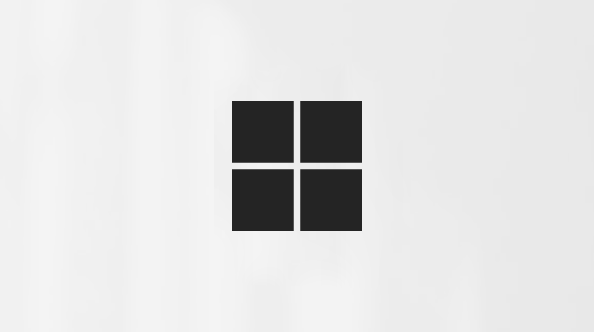Even though more recent versions of PowerPoint look quite different than earlier versions, the commands and functions that you're used to are still here. They're all now in the ribbon, which is a kind of menu that organizes them in a visual way.
Let's first look at how the ribbon works, and then how to find where the features you want might be.
How do you work with the ribbon?
When you open a PowerPoint document, the ribbon appears as a row of labels, or what we call tabs.
When you go to a tab, the ribbon for that tab opens and you can see the tools and functions that were formerly in menus and toolbars in earlier versions of PowerPoint.
When you see a feature with an arrow
You might also notice dialog launchers
What's on the ribbon tabs?
The ribbon tabs group tools and features together based on their purpose. For example, to make your slides look better, look for options on the Design tab. The tools that you use to animate things on your slide would be on the Animations tab.
Here's a look at what you'll find in each of the PowerPoint ribbon tabs.
Home
The Home tab holds the Cut and Paste features, Font and Paragraph options, and what you need to add and organize slides.
Insert
Select Insert to add something to a slide. This includes pictures, shapes, charts, links, text boxes, video and more.
Draw
The Draw tab provides tools draw and use ink on your slides. This includes pens, eraser, ruler, ink to shape and in to math conversions, selection, and more.
Design
On the Design tab, you can add a theme or color scheme, or format the slide background.
Transitions
Set up how your slides change from one to the next on the Transitions tab. Find a gallery of the possible transitions in the Transition to This Slide group – click More
Animations
Use the Animations tab to choreograph the movement of things on your slides. Note that you can see many possible animations in the gallery in the Animation group, and see more of them by clicking More
Slide Show
On the Slide Show tab, set up the way that you want to show your presentation to others.
Record
On the Record tab set up recording audio and video of the presentation, exporting as video or saving as a show, and adding a cameo of you on camera.
Review
The Review tab lets you add comments, run spell-check, or compare one presentation with another (such as an earlier version).
View
Views allow you to look at your presentation in different ways, depending on where you are in the creation or delivery process.
File
At one end of the ribbon is the File tab, used for the behind-the-scenes file stuff, such as opening, saving, sharing, exporting, printing and managing your presentation. Click the File tab to open a new view called the Backstage. Select Back
Contextual tabs
When you select certain items on a slide—such as a picture, shape, SmartArt graphic or text box—an additional tab temporarily appears.
For example, when a shape or text box is selected the Shape Format tab appears. If you select a picture, the Picture Format tab appears. Other such tabs include SmartArt Design and Format, Chart design and Format, or Table Design and Table Layout. To save space on the ribbon, these tabs are only visible while a corresponding item is selected on the slide.














